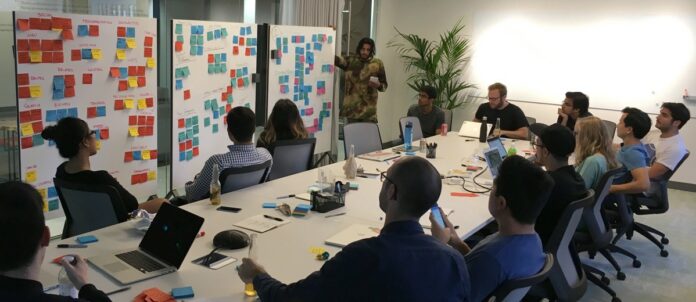As the name suggests, brainstorming is the process of storm one’s brain to solve a problem with creative ideas. A brainstorming session conduct at the beginning of a project is an excellent way to take teams input and develop ideas.
A productive brainstorming session can help the business with a creative solution and ideas for their problem and make the team leave with a feeling of accomplishment, energized and enthusiasm for the next step.
On the other hand, brainstorming sessions where participants are bickering with each other, while some sit and listen without participating, make this complete process useless and unproductive.
Here are some ways to make brainstorming sessions more efficient:
- Brainwriting:
In brainstorming meetings, 60 to 70% of talking is done by few people while others sit and listen instead of sharing their ideas. This event is known as anchoring. Brainwriting is the method that helps eliminate anchoring.
In this method, the team leader shares a topic with the team where all team members have to write down their idea. This method motivates everyone on the team to share their suggestion and maintain the proportion of attention given to all members views.
- Mind Mapping:
Mind mapping is the most reliable visual tool used to enhance the brainstorming process by enabling you, to organize the ideas and information you have gathered. It helps you to draw a relationship between ideas and concepts.
Begin by writing down your goal and add content to your map layer by layer so that you can visually see how. Due, to its popularity, there are many mind mapping software online that help organizations achieve innovation more successfully. In reality, a piece of paper and few markers can also do the job.
- Rapid Ideation:
Some people tend to overthink allotting too much time brainstorming activities can make such people not share their ideas so, setting a time limit for a session may prove to help them share their ideas which, can be debate later on.
In this method, the team leader share topic beforehand and the team member has to pen down their ideas before a specified deadline. The time limit for a session varies based on the complexity of the topic ranging from 5 to 45 minutes.
- Reverse Brainstorming:
Typical brainstorming techniques ask for ideas to solve problems. In contrast, reverse brainstorming techniques is formed based on the natural ability to see issues more conveniently than the solution.
In reverse brainstorming, participants are, requested to come up with problems that can cause failure. Once you have a list of the problem that can arise, you come up with solutions for that problem in an ordinary brainstorming meeting.
- Round Robin Brainstorming:
In this brainstorming technique, the team form a circle. Once the topic is shared, go around the circle, one by one, until every person has suggested their idea. Round robin brainstorming ensures that every single participant get a chance to speak and everyone present their ideas.
A facilitator records all the ideas shared to be discussed later on. It is important not to evaluate any idea until everyone has shared their suggestions. You can also prevent a repeat of a statement in this method.
Follow and connect with us on Facebook, LinkedIn & Twitter

